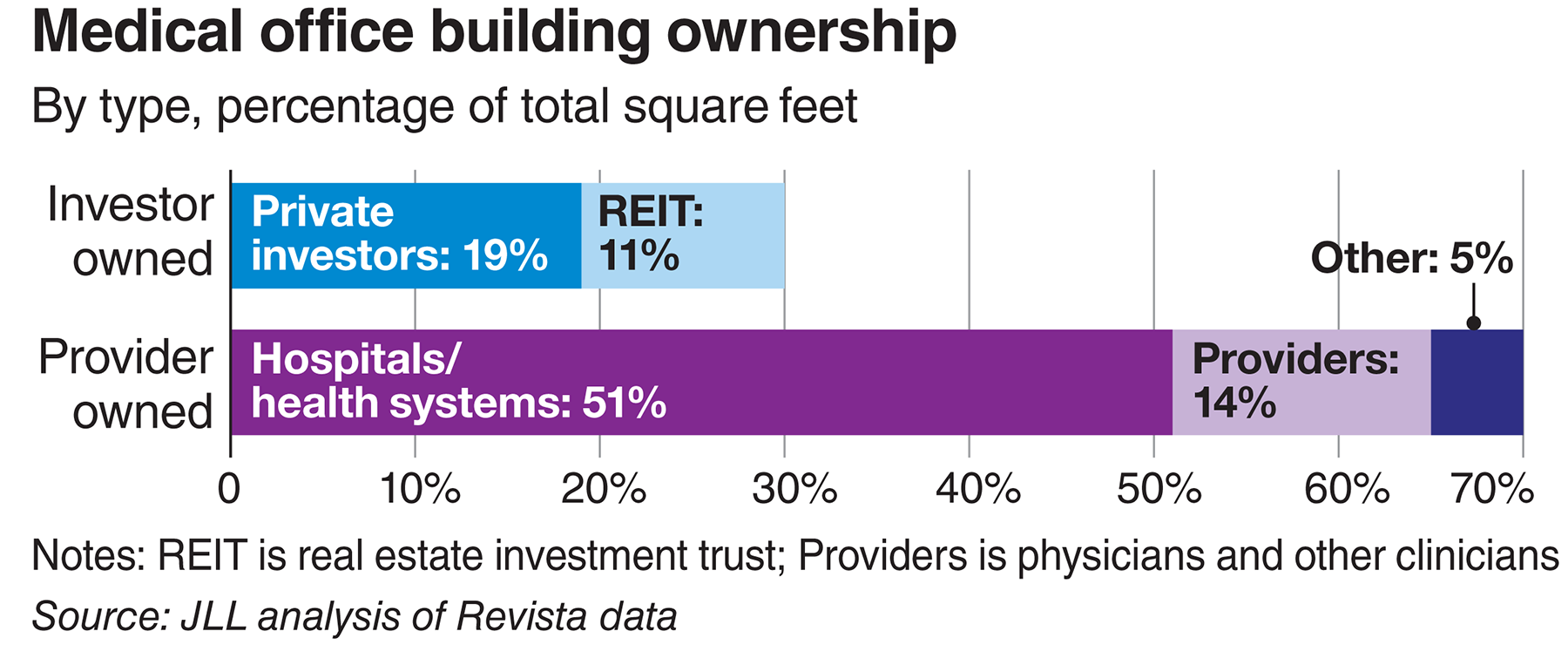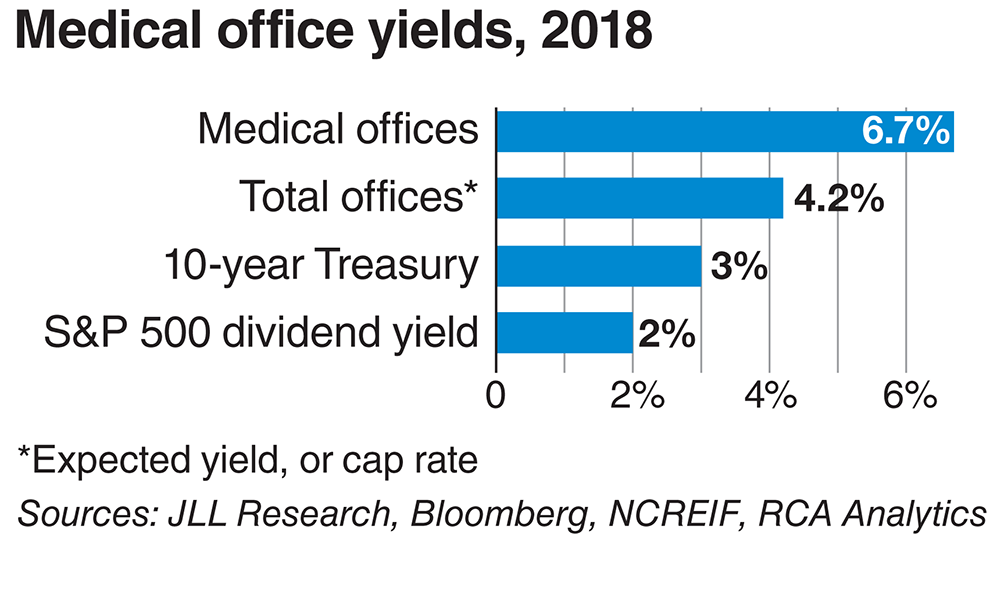Case For Investing In Healthcare Real Estate Remains Strong: Panel Discusses Pros And Cons Of Sector
As brick and mortar retail stores flounder and pricing for industrial and multi-family properties continues to soar, many investors in recent years have started to look to “niche” commercial real estate (CRE) sectors to round out their portfolios.
One of the more newly discovered niche property types are medical office buildings (MOBs) and healthcare real estate (HRE) facilities, which aren’t exactly very “niche” anymore.
“It just seems like all investors are talking about these sectors now — student housing, self-storage, life science, medical — whereas before all the news was about office, retail, multi-family and industrial,” said Elizabeth Thomas, managing director with Boston-based Bain Capital Real Estate, which is a relatively new investor in the HRE sector.
Nicholas Buss, senior director of research for Atlanta-based Invesco Real Estate (NYSE: IVZ), agreed with Ms. Thomas, adding “The firm “broke away from its shell about two years ago and started looking at sectors around the edge as well. We like the secular (non-cyclical) drivers behind medical real estate and the durability of the property type that seems to continue through economic cycles and gives us some diversification in our portfolio.”
“Even though the amount of MOB square footage, at 3 billion square feet, represents only about 5 percent of the overall commercial real estate (CRE) sector, the space is very attractive and has been the focus of many new investors in recent years,” according to Daniel Klein, senior VP of investments and deputy chief investment officer with Milwaukee-based Physicians Realty Trust (NYSE: DOC).
Mr. Klein moderated an HRE investment panel session that included Ms. Thomas and Mr. Buss at the fifth annual Revista Medical Real Estate Investment Forum, which was held Feb. 6-7 in San Diego. The session was titled “The Case for Investing in HRE” and also included as panelists Peter Martin, managing director with San Francisco-based JMP Securities, and Charles Campbell, managing partner and CEO of Charlotte, N.C.-based Flagship Healthcare Properties, which also manages a private real estate investment trust (REIT) that owns MOBs.
The focus of the panel was to hear from investors – both those who have been in the space for years as well as newcomers – as to why HRE is currently so attractive and whether it will be for the long haul. While the focus was mostly on MOBs, the panelists also talked about other HRE facility types, such as senior housing and post-acute care.
“We like the fact that the property type is not a GDP (gross domestic product) dependent property type,” Ms. Thomas noted. “We like the strength of the demographics that will depend on senior housing, and we like the fact that clinical care is migrating from the hospitals out to where the patients are. In addition, the MOB sector is not fraught with speculative development when we’re looking to invest in other sectors we really have to monitor the amount of spec development taking place.”
“JMP Securities entered the HRE space in a number of different ways, including as an investment bank providing equity growth capital for operators, and then we moved into the REITs, funding apartment REITs before moving over the healthcare REITs,” Mr. Martin told the audience. “We’ve taken a value-add approach on the investment side, as our work on the healthcare side is focused on the dislocation created by different reimbursement changes. In the last five years, we’ve been building things and selling them back to the healthcare systems, who have been slow to realize they need more outposts to service their beneficiaries.”
“The company made a commitment to HRE a decade ago and is all in, with no discussion on whether we should allocate capital to other spaces,” Mr. Campbell of Flagship Healthcare Properties said. “The company started a private REIT in recent years that is largely funded by high net-worth individuals and family offices, including some foreign investors. When we sit down with our investors, they keep coming back to us about the stability, the risk-adjusted yields and the predictability of the sector. A lot of it comes down to our access to deal flow, and in our world there is a premium to having relationships with good operators to work with. Flagship REIT is a longer-term holder of its MOB assets, and we tell our investors we say we like to own for a minimum of five years. Unless you’re a ground-up developer or a value-add buyer, that’s how you benefit from the inherent stability of the product type. And, it’s also a good way to build relationships with the health systems, as they prefer ownership stability as well.”
Source: HREI








